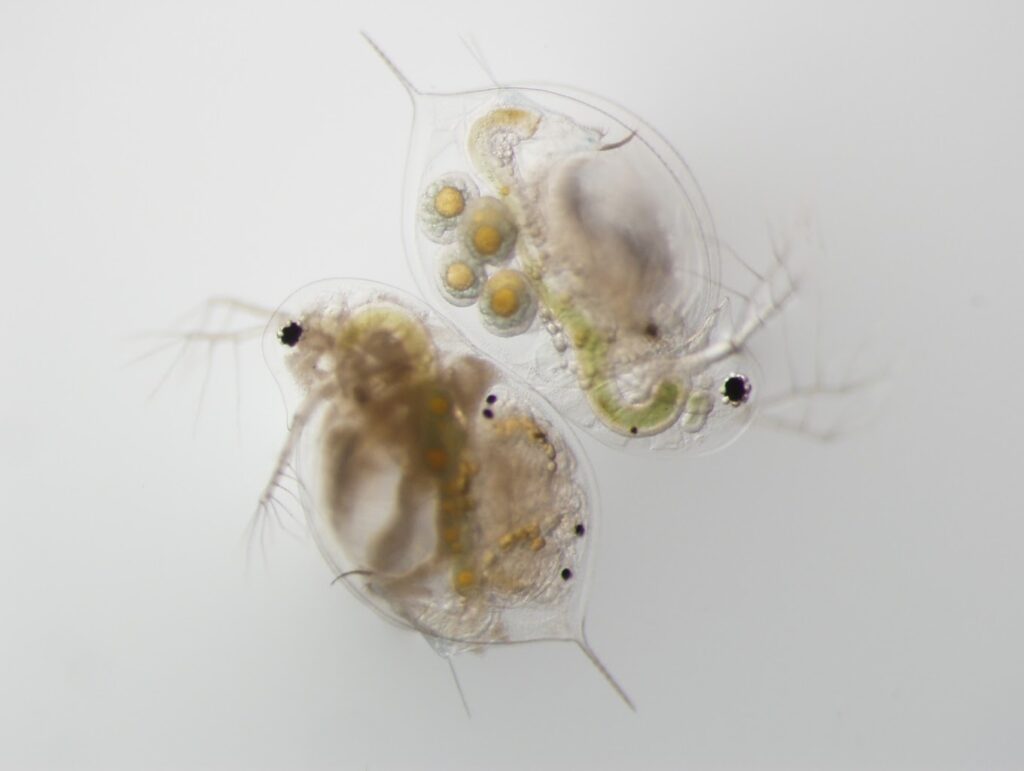In Greek mythology, Hydra was a monstrous water serpent that lived in a swamp and terrorized nearby residents. When intrepid Hercules sliced off one of Hydra's multiple heads, two more heads grew back in its place.
This counterintuitive result — when an action taken to reduce a problem actually multiplies it — is known as a hydra effect. Scientists propose that ecological systems exhibit something akin to a hydra effect when a higher death rate in a species ultimately increases the size of its population.
In other words, what does kill you makes you … more abundant.

New research from Rachel Penczykowski, assistant professor of biology in Arts & Sciences at Washington University in St. Louis, investigates why and in what types of systems this hydra effect can occur. The study includes laboratory components and an analysis of 13 fungal epidemics in nature.
"Disease epidemics can drive declines in host populations, trigger conservation crises for wildlife and sometimes even drive hosts extinct," Penczykowski said. "Typically we predict that parasites that increase host mortality rate should decrease host density. But this is not always the case."
Penczykowski's study in the journal American Naturalist starts with the common water flea. These tiny crustaceans with antler-like antennae and rounded bellies twitch their way through freshwater lakes across North America.
But the story is even larger than these adorable algae-eaters.
Food web interrupted
Water fleas are filter feeders that play a key role in local food webs.

"If you want a nice, clear lake, you want a lot of these zooplankton swimming around gobbling up all the algae," Penczykowski said.
Water fleas typically range in size from 1-5 mm. They grow larger as they eat and then become food themselves, hunted by midge larvae and larval fish.
But it's that gobbling mouth that gets water fleas into trouble. While gliding through the water eating little floating plants, water fleas accidentally swallow spores of a fungal parasite.
The parasite soon takes hold — an infection that seems all the more dramatic because it's easy to see the fungus spores spread through the water flea's see-through body.
Ultimately, the infection kills the water flea in a matter of days.

"You see these little needle-shaped things accumulating," Penczykowski said. "Then it starts to grow in their head and everywhere." Heavily infected water fleas become more sluggish.
In the new study, Penczykowski and her collaborators conducted feeding experiments and determined that water fleas tend to eat significantly less once infected, even during the early days of their infections.
Cue the hydra: Here is the opportunity for other water fleas to step up.
Water fleas are normally such important algae "grazers" that their presence can mean the difference between a mucky marsh and a really nice swimming hole. But once some individuals in a lake become infected and stop foraging as much, there is more algae available for as-yet-uninfected water fleas to eat.
Key conditions
Penczykowski discovered that this is one of the key conditions for a hydra effect. The parasite must target a host — in this case, water fleas — that would otherwise substantially consume all available food resources.

The new study uses consumer-resource theory to explain why — and in what types of systems — the hydra effect can occur. (The hydra effect cannot be used to describe the spread of coronavirus or effects in human systems, Penczykowski noted.)
In addition to the laboratory feeding experiments, Penczykowski and her collaborators investigated 13 fungal epidemics in nature. All of their samples came from freshwater lakes, located primarily in the U.S. Midwest. The scientists counted infected and uninfected water fleas and figured out how much algae was available for the water fleas to eat.
The model they had developed in the laboratory was accurate in predicting the results they saw in the wild.
"We found evidence for a foraging-mediated hydra effect: large outbreaks depressed foraging rate and correlated with increased densities of both algal resources and Daphnia hosts," Penczykowski said.
"There is a balance between the mortality imposed by the parasite and the impact on the feeding rate," she said. "If the parasite is too virulent and poses too high of a death rate, you would be less likely to see this hydra effect. But also if there's no increased death rate, you don't expect it."






